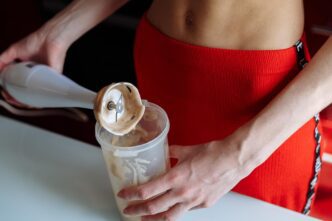A Quick Takeaway
The Story Behind the Trend
How to Make It Work for You
The Community View
High-Intensity Interval Training, or HIIT, is a highly effective workout strategy that involves short, intense bursts of anaerobic exercise followed by brief, active recovery periods, making it an incredibly efficient method for anyone looking to burn fat rapidly and significantly improve their cardiovascular fitness. This dynamic approach, which can yield remarkable results in under 20 minutes per session, is ideal for busy individuals who want to maximize their workout impact without dedicating hours to the gym, leveraging the body’s natural metabolic processes to incinerate calories and enhance overall well-being.
Understanding the Power of HIIT
HIIT operates on a simple yet powerful principle: pushing your body to its maximum capacity for short durations, followed by periods of lower intensity activity. This cyclical pattern of extreme effort and recovery shocks your system, forcing it to adapt and burn more calories, not just during the workout, but for hours afterward.
Unlike traditional steady-state cardio, which primarily burns calories during the exercise itself, HIIT triggers a phenomenon known as EPOC, or Excess Post-exercise Oxygen Consumption. This “afterburn” effect means your body continues to consume oxygen at an elevated rate, burning calories and fat long after your workout has concluded, as it works to restore itself to a pre-exercise state.
Why HIIT is a Fat-Burning Powerhouse
Metabolic Boost and EPOC
The intense nature of HIIT workouts significantly elevates your heart rate and metabolism. This metabolic surge is what drives the EPOC effect, making your body a calorie-burning furnace even at rest. Research consistently shows that HIIT can lead to greater fat loss compared to moderate-intensity continuous training, despite a shorter workout duration.
This prolonged calorie expenditure is a game-changer for fat loss. It effectively turns your body into a more efficient fat-burning machine, optimizing energy utilization and promoting a leaner physique over time. The body’s demand for oxygen post-HIIT is crucial for repairing muscle tissue and replenishing energy stores, contributing to this sustained calorie burn.
Muscle Preservation and Growth
While often associated with cardio, HIIT is also excellent for preserving and even building lean muscle mass, especially when incorporating resistance-based movements. Maintaining muscle is critical for fat loss, as muscle tissue is more metabolically active than fat tissue, meaning it burns more calories at rest.
Traditional long-duration cardio can sometimes lead to muscle loss, but HIIT’s intense, short bursts help signal to the body that muscle mass is needed for performance. This helps ensure that the weight you lose is primarily fat, not valuable muscle, supporting a healthier body composition.
Improved Insulin Sensitivity
Regular HIIT training has been shown to improve insulin sensitivity, which is vital for effective fat loss and overall metabolic health. When your body is more sensitive to insulin, it can more efficiently use glucose for energy, rather than storing it as fat.
This improvement helps regulate blood sugar levels and reduces the likelihood of fat accumulation, particularly around the abdominal area. Better insulin sensitivity also contributes to sustained energy levels throughout the day, reducing cravings and promoting better dietary choices.
Designing Your Under-20-Minute HIIT Workout
The beauty of HIIT lies in its adaptability and efficiency. A complete fat-burning session can easily be condensed into less than 20 minutes, making it perfect for even the busiest schedules. The key is to structure your workout properly.
Warm-Up (3-5 minutes)
Always begin with a dynamic warm-up to prepare your muscles and cardiovascular system for the intense work ahead. Light cardio such as marching in place, arm circles, leg swings, and dynamic stretches will increase blood flow and reduce the risk of injury.
Work & Recovery Intervals (10-12 minutes)
This is the core of your HIIT workout. Choose 3-5 exercises and perform each at maximum effort for a set period, typically 20-40 seconds, followed by an equally short recovery period (10-30 seconds). Repeat this cycle for 4-6 rounds, moving quickly between exercises.
For example, you might perform jumping jacks for 30 seconds, rest for 20 seconds, then burpees for 30 seconds, rest for 20 seconds, and so on. Adjust the work-to-rest ratio based on your fitness level, always aiming for intensity during the work intervals.
Cool-Down (3-5 minutes)
End with a cool-down phase, gradually bringing your heart rate down and performing static stretches. This helps improve flexibility and aids in muscle recovery, reducing post-workout soreness.
Effective HIIT Exercises (No Equipment Needed)
You don’t need fancy equipment to perform an effective HIIT workout. Many powerful exercises utilize just your body weight:
- Burpees: A full-body explosive movement that rapidly elevates heart rate.
- Jumping Jacks: A classic cardio exercise that gets the whole body moving.
- Mountain Climbers: Engages core, shoulders, and legs, mimicking running in place.
- High Knees: Drives the knees up towards the chest, a powerful cardio burst.
- Bodyweight Squats: Targets major leg muscles, boosting metabolic demand.
- Plank Jacks: Combines core stability with dynamic movement.
Safety and Best Practices
While HIIT is highly effective, it’s also demanding. Listen to your body and prioritize proper form over speed. If you’re new to exercise or have underlying health conditions, consult with a healthcare professional before starting any new high-intensity program.
Aim for 2-3 HIIT sessions per week, allowing for adequate rest and recovery days in between. Incorporate other forms of exercise, like strength training or steady-state cardio, on alternate days for a well-rounded fitness regimen. Hydration is also crucial before, during, and after your workouts.
Beyond the Burn: Additional Benefits
Beyond its unparalleled fat-burning capabilities, HIIT offers a wealth of other health advantages. It significantly improves cardiovascular health, boosts endurance, and can even enhance mental resilience as you push through challenging intervals. The time efficiency of HIIT also makes it incredibly sustainable, fitting into even the most demanding schedules.
Your Path to Rapid Results
Embracing HIIT workouts is a strategic move for anyone seeking to unleash their body’s fat-burning potential and achieve rapid, sustainable results, all within the convenience of short, intense sessions. By consistently challenging your body with these powerful bursts of effort, you’ll not only shed unwanted fat but also build a stronger, more resilient, and metabolically efficient physique, proving that significant fitness gains don’t always require significant time commitments.








